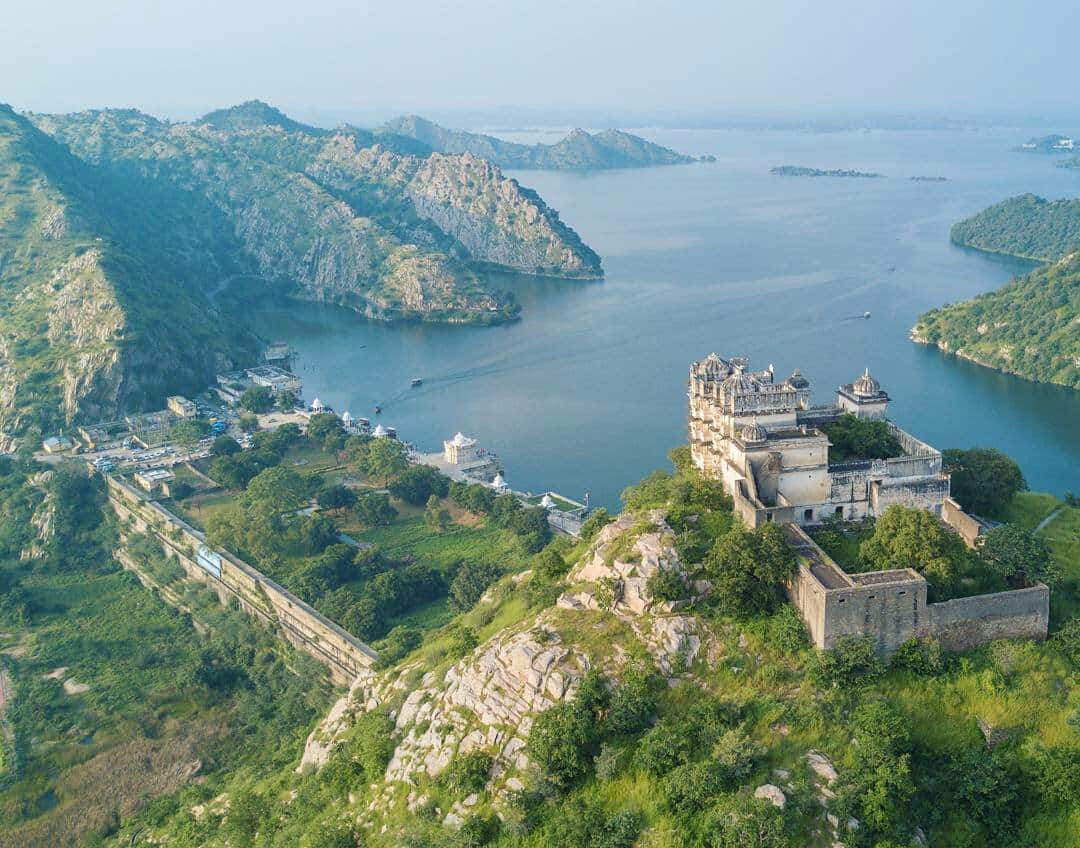About Jaisamand Wildlife Sanctuary:
- Location: It is located in the Udaipur district of Rajasthan surrounding Debar Lake (Jaisamand Lake).
- The forest of the Sanctuary used to be a Shikargah (Game Reserve) of the erstwhile Maharanas of Mewar.
- It was declared a Wildlife Sanctuary in the year 1957.
- Vegetation: Dry deciduous forests, and scrub forests.
- Flora: The flora of this Sanctuary comprises of thickly wooded forests of mainly Teak wood.
- Fauna:
- It is habitat to a large variety of animals like Bears, Black Bucks, Blue Bulls, Chinkaras, Chittal or Spotted Deer, Civets, Common Langurs, Four-horned Antelope, Foxes etc.
- It is also home to a huge variety of over 300 species of resident as well as migratory birds like Babblers, Buzzards, Curlews, Dalmatian Pelicans, Darters, Doves, Eagles, Egrets, Falcons, etc.
Key Facts about Debar Lake (Jaisamand Lake):
- It is renowned for being the second largest artificial lake in Asia.
- In 1685, Maharana Jai Singh built this lake while making a dam on the Gomti River.
- This lake covers an area of 36sq km, stretches to the length of 14 km and width of 9 km. The lake is deep to the maximum of 102 feet and has a circumference of 30 miles.
- The lake receives water from four main rivers, the Gomti, Jhamari, Rooparel and Bagaar.
- The massive dam was constructed on this lake also houses a centrally located Shiva temple.
- The northern end of the lake has a palace with a courtyard while its southern end has a pavilion of 12 pillars.
- Islands:
- There are seven islands on the lake and the tribe of Bhil Minas inhabit these islands.
- There are two main islands which are large in size. The biggest island is called Babaka Bhagra while the smallest is called “Piari”.
Q1) What is a Wildlife Sanctuary?
Regions with enough ecology, biological variety, species diversity, geological value, morphological value, biological value, and zoological worth are considered wildlife sanctuaries. These areas are used to protect, reproduce, or expand wildlife. Territorial waters and areas included in forest reserves are exempt from this rule.
Source: Rajasthan: CM Ashok Gehlot inaugurates ‘Jungle Safari’ at Jaisamand Wildlife Sanctuary
Last updated on June, 2025
→ UPSC Notification 2025 was released on 22nd January 2025.
→ UPSC Prelims Result 2025 is out now for the CSE held on 25 May 2025.
→ UPSC Prelims Question Paper 2025 and Unofficial Prelims Answer Key 2025 are available now.
→ UPSC Calendar 2026 is released on 15th May, 2025.
→ The UPSC Vacancy 2025 were released 1129, out of which 979 were for UPSC CSE and remaining 150 are for UPSC IFoS.
→ UPSC Mains 2025 will be conducted on 22nd August 2025.
→ UPSC Prelims 2026 will be conducted on 24th May, 2026 & UPSC Mains 2026 will be conducted on 21st August 2026.
→ The UPSC Selection Process is of 3 stages-Prelims, Mains and Interview.
→ UPSC Result 2024 is released with latest UPSC Marksheet 2024. Check Now!
→ UPSC Toppers List 2024 is released now. Shakti Dubey is UPSC AIR 1 2024 Topper.
→ Also check Best IAS Coaching in Delhi
























